< more recent | 8-14 March 2023 | older >
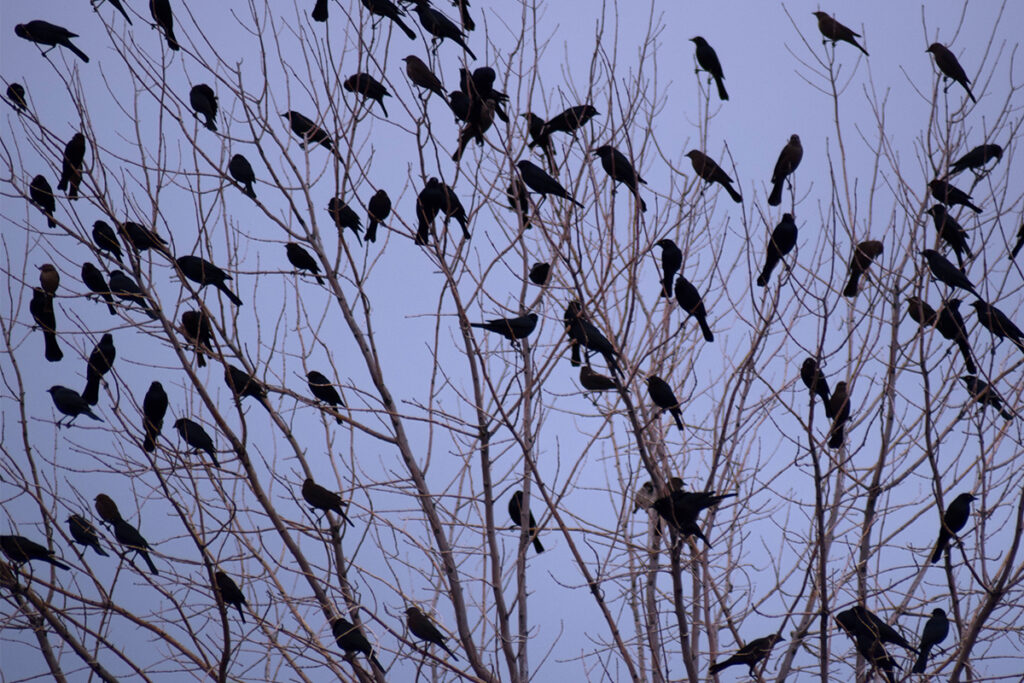
14 March 2023: The wildlife seems to sense the storm. Lots of heavy rain and some areas have seen flooding (the Dry Beaver Creek is now “Wet Beaver Creek”). Staying inside where it’s dry…
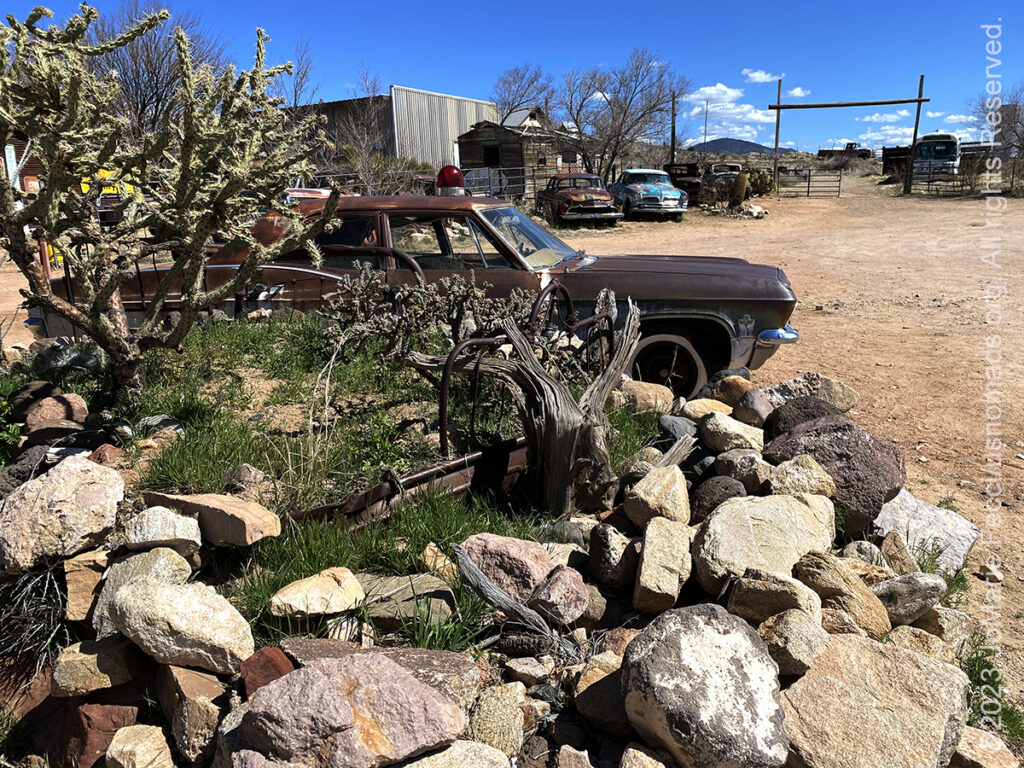
13 March 2023: Heading back to Arizona and picked up a favorite section of Route 66 to make a stop at the Hackberry General Store which is a wonderfully preserved location with lots of great old cars and artifacts from the hey day of the Mother Road …
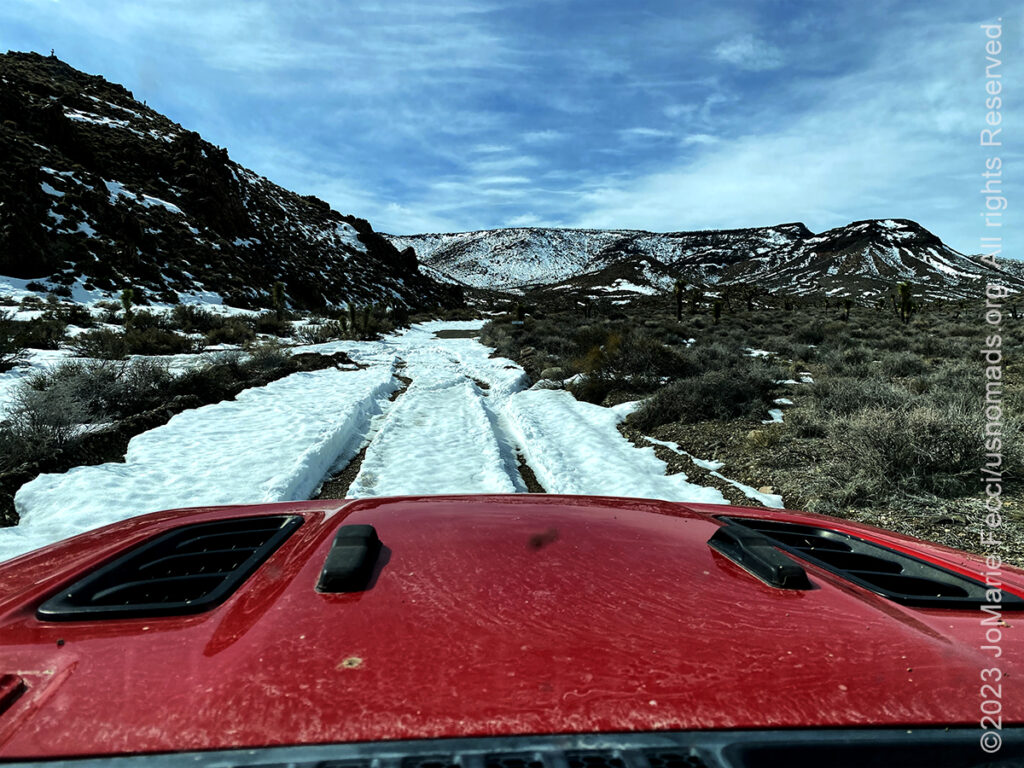
12 March 2023: Took the new route up towards Goldpoint and it was a beautiful drive until we got to a place where snow blocked the route. If it doesn’t melt before the DVE event, or if it snows again, this route will not be advisable for a “stock friendly” run. We will have to wait and see what conditions are like closer to the event dates. But definitely like this route better than the one from last year. Much more varied terrain and some interesting mining sites to explore en route, too…
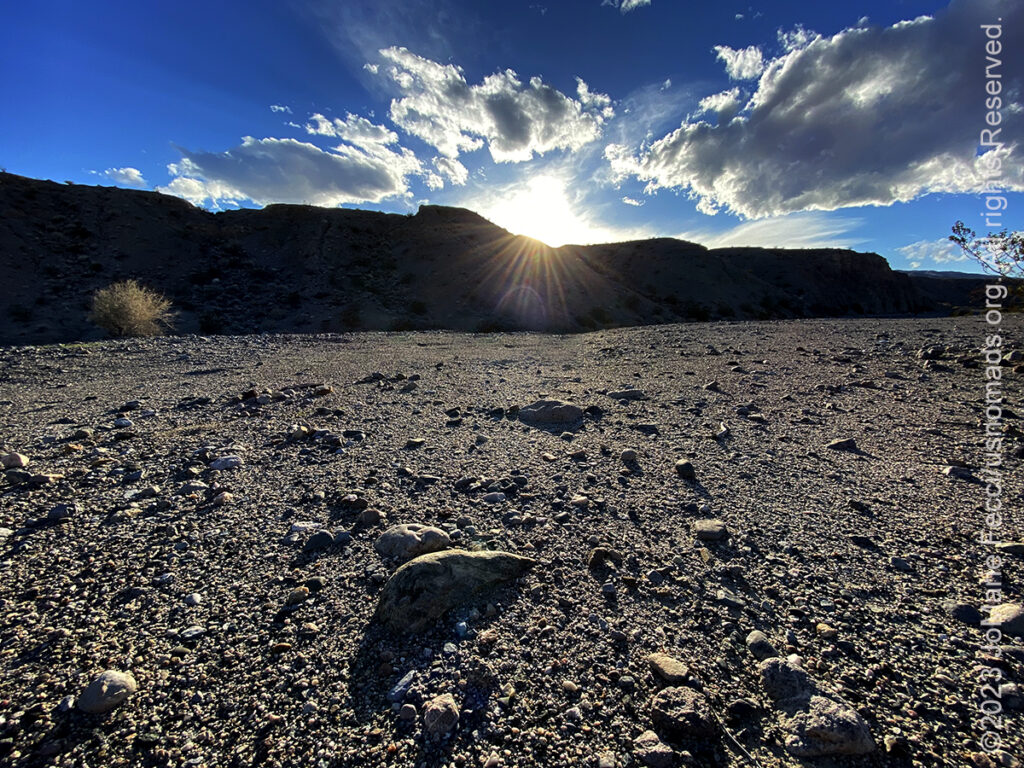
11 March 2023: Made it the rest of the way to Death Valley and got camp set up at Mesquite Springs just in time to watch the sunset. Tomorrow’s plan is for a pre-run of the new DVE route to Goldpoint. We had to change it up because of recent flooding that apparently washed out part of the route we used last year. Weather has been very unstable lately, too, with heavy snowfall and strong winds…
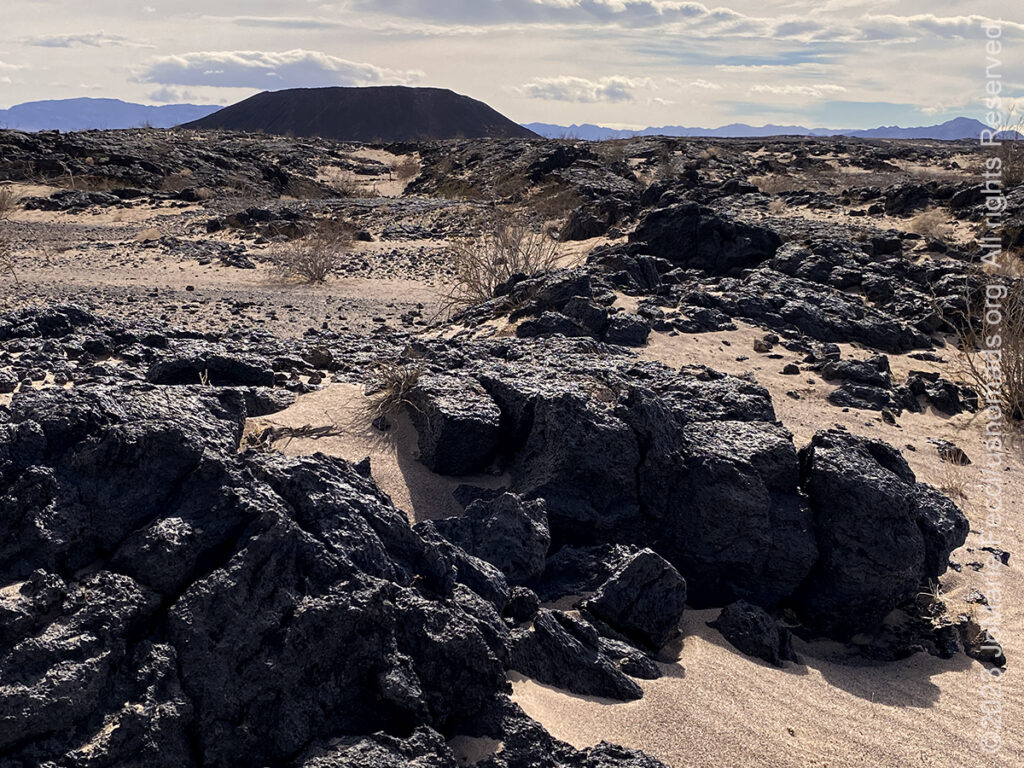
10 March 2023: Left Yucca Valley and took the slow road north to Laughlin Nevada making a lot of stops along the way to explore and discover some of the desert’s surprises. The Amboy Crater National Monument was one of them. Saw the “volcano” from the distance and the black hardened lava flow contrasting with the golden desert sand intrigued me. Didn’t know it was a national monument until driving practically right up to it…
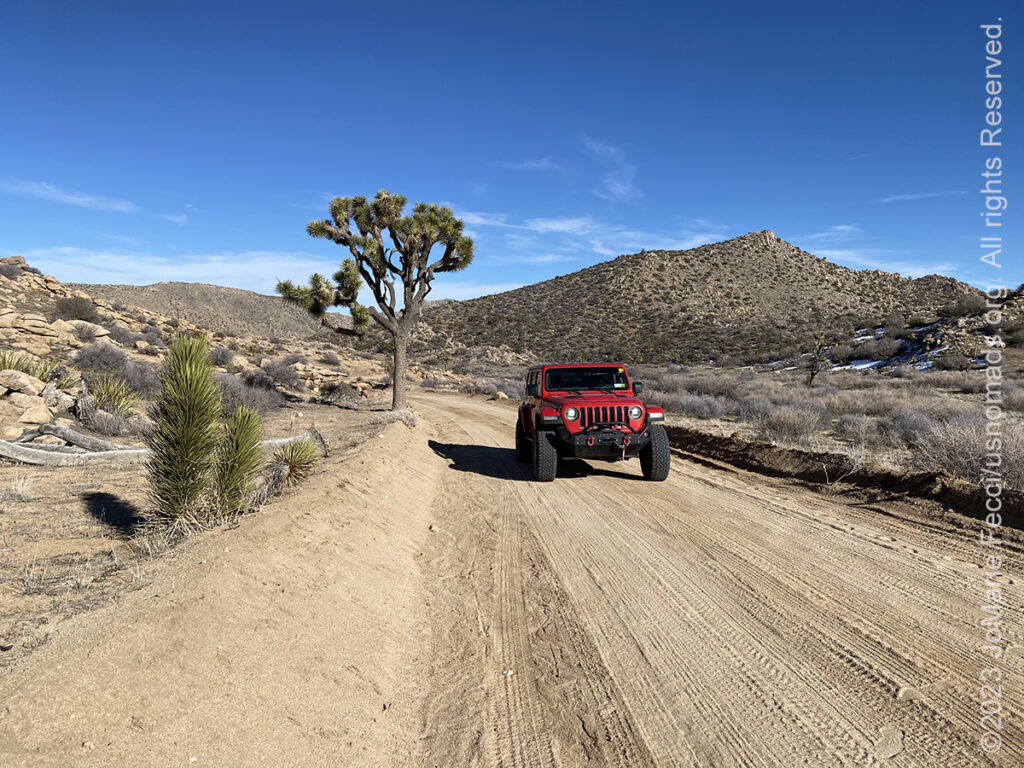
9 March 2023: Continued exploring the park’s less crowded areas. Took nice little Jeep trail to Eureka Peak — and it was actually a maintained and graded dirt road that led to a beautiful overlook. Amazingly there was no one else out there and once again it was like we had the whole place to ourselves…
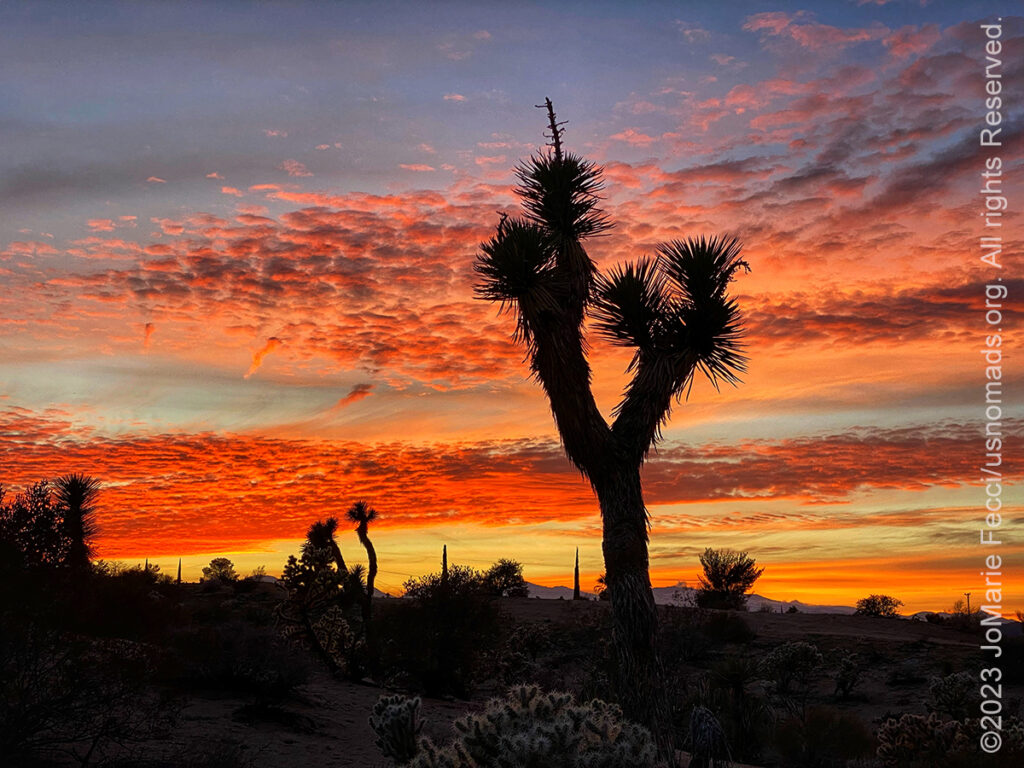
8 March 2023: Taking some time out to enjoy a bit of solitude today, just appreciating the desert and the natural beauty all around. Had an amazing sunset and the sky finished the day with a kaleidescope of colors enrobing the Joshua Trees …
THIS MONTH:
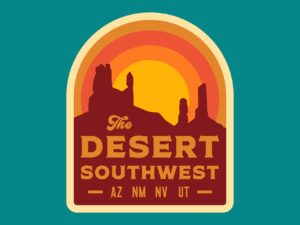
Roadtrip time again. Heading southwest and into the desert for some new exploration as well as a few of our favorite events. Lots of details still to be determined, but we’re on our way…

Joining the Barlow Adventures crew at the Imperial Sand Dunes in southern California to document the training process for a seven-day driving and navigation program focused on moving safely and effectively through the desert…
COMING UP SOON:
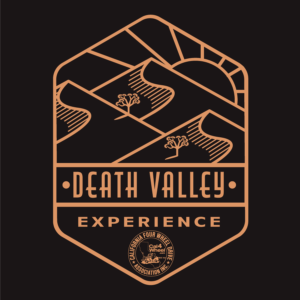
Trail Guiding for the California 4-Wheel Drive Association’s second annual Death Valley Experience fundraiser event running March 22-25, 2023. Each day will feature a choice of runs to some famous, some infamous and some secretive points of interest within Death Valley National Park. The runs will depart from Furnace Creek and from Stovepipe Wells. Some of the points of interest we will visit during Death Valley Experience 2023 include Zabriskie Point (famous) and Barker Ranch (infamous) as well as Dante’s View, 20 Mule Team Canyon, Artists’ Drive, Chloride Cliffs, Aguereberry Point, Skidoo and Darwin Falls. All of the trail runs are suitable for novice drivers and SUVs with high clearance and 4-wheel drive…

USnomads.org is very proud to be presenting the second edition of the Nomad Overland Virtual Adventure Rally in 2023. This is a new kind of rally experience — a ten week event that participants can do from anywhere within the continental U.S.A. Competitors design their own routes as part of the rally, then drive it in a points-based online competition that includes optional activity tasks, quests and weekly challenges. The 2023 rally will run from 5 June – 13 August and is open to any driver within the United States who has an off-road capable vehicle — stock or modified. Registration for 2023 is open now. For more information see the Rally website …
JOSHUA TREE NATIONAL PARK
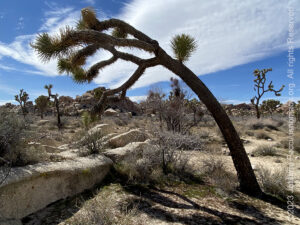
Joshua Tree National Park, located in southeastern California, east of San Bernardino and Los Angeles and north of Palm Springs, is named for the Joshua trees (Yucca brevifolia) native to the Mojave Desert.The park encompasses a total of 795,156 acres and is slightly larger than the state of Rhode Island. Joshua Tree straddles parts of two deserts, each an ecosystem whose characteristics are determined primarily by elevation: the higher Mojave Desert and the lower Colorado Desert. The higher and cooler Mojave Desert is the special habitat of the Joshua tree for which the park is named. It occurs in patterns from dense forests to distantly spaced specimens. In addition to Joshua tree forests, the western part of the park includes some of the most interesting geologic displays found in California’s deserts. The dominant geologic features of this landscape are hills of bare rock, usually broken up into loose boulders. These hills are popular among rock climbing and scrambling enthusiasts. Below 3,000 feet, the Colorado Desert encompasses the eastern part of the park and features habitats of creosote bush scrub, ocotillo, desert saltbush, and mixed scrub including yucca and cholla cactus. The only palm native to California, the California fan palm, occurs naturally in five oases in the park, rare areas where water occurs naturally year-round. The earliest known residents of this land were the people of the Pinto Culture, who lived and hunted here between 8000 and 4000 BCE. Their stone tools and spear points, discovered in the Pinto Basin in the 1930s, suggest that they hunted game and gathered seasonal plants, but little else is known about them. Later residents included the Serrano, the Cahuilla, and the Chemehuevi peoples. All three lived at times in small villages in or near water, particularly the Oasis of Mara in Twentynine Palms. A fourth group, the Mojaves, used the local resources as they traveled along trails between the Colorado River and the Pacific coast. In 1772, a group of Spaniards led by Pedro Fages made the first European sightings of Joshua trees while pursuing native converts to Christianity who had run away from a mission in San Diego. In 1870, white settlers began grazing cattle on the tall grasses that grew in the area and a gang of cattle rustlers moved into the region near the Oasis of Mara around 1888. Led by brothers James B. and William S. McHaney, they hid stolen cattle in a box canyon at Cow Camp. Throughout the region, ranchers dug wells and built rainwater catchments called “tanks”, such as White Tank and Barker Dam. Grazing continued in the area of the park through 1945. The Joshua Tree area was also home to mining activity. Between the 1860s and the 1940s, miners worked about 300 small pit mines. The most successful, the Lost Horse Mine, produced gold and silver worth about $5 million in today’s currency. Johnny Lang and others, the original owners of the Lost Horse Mine, installed a two-stamp mill to process ore at the site, and the next owner, J.D. Ryan, replaced it with a 10-stamp steam-powered mill. Ryan pumped water from his ranch to the mill and cut timber from the nearby hills to heat water to make steam. The area of the park became “protected” on August 10, 1936, when President Franklin D. Roosevelt used the power of the 1906 Antiquities Act to establish Joshua Tree National Monument…
MORE NOTES FROM THE ROAD:
1-7 March – Glamis
20-28 February – Southwest Roadtrip
1-19 February – Woman and Machine
January – Woman and Machine
22-31 December – Holiday Roadtrip
16-21 December – Holiday Roadtrip
1-15 December – Long Island
November – Long Island
22-31 October – Roadtrip East
15-21 October – Moab LONCON
8-14 October – Moab LONCON
1-7 October – Roadtrip West
22-30 September – Roadtrip West
16-21 September – Roadtrip West
1-15 September – Long Island
August – Long Island
15-31 July – Serbia
1-14 July – NE Roadtrip
16-30 June – NE Roadtrip
1-15 June – Long Island
May – Nomad Rally Prep
16-30 April – Long Island
7-15 April – Heading Back to NY
1-6 April – Heading Back to NY
27-31 March – Death Valley- DVE
21-26 March – LON Skills Camp
15-20 March – Death Valley
8-14 March – Nevada
1-7 March – Glamis Training
Archive
SPECIAL REPORT
All about exploring ghost towns and abandoned places in the USA and beyond, with tips, and information on the many different types of sites to be found across the globe, including detailed guides for eight specific sites… [read]
REFLECTIONS
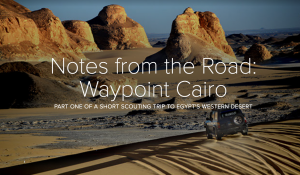
EGYPT: CAIRO REFLECTIONS
A quick overview of impressions from a stop in Cairo during our recent scouting mission in Egypt and Sudan … [read]
SPECIAL REPORT
A look into south-eastern Algeria on the border with Libya and Niger: overlanding with the Tuareg in one of the most remote corners of the Sahara … [read]